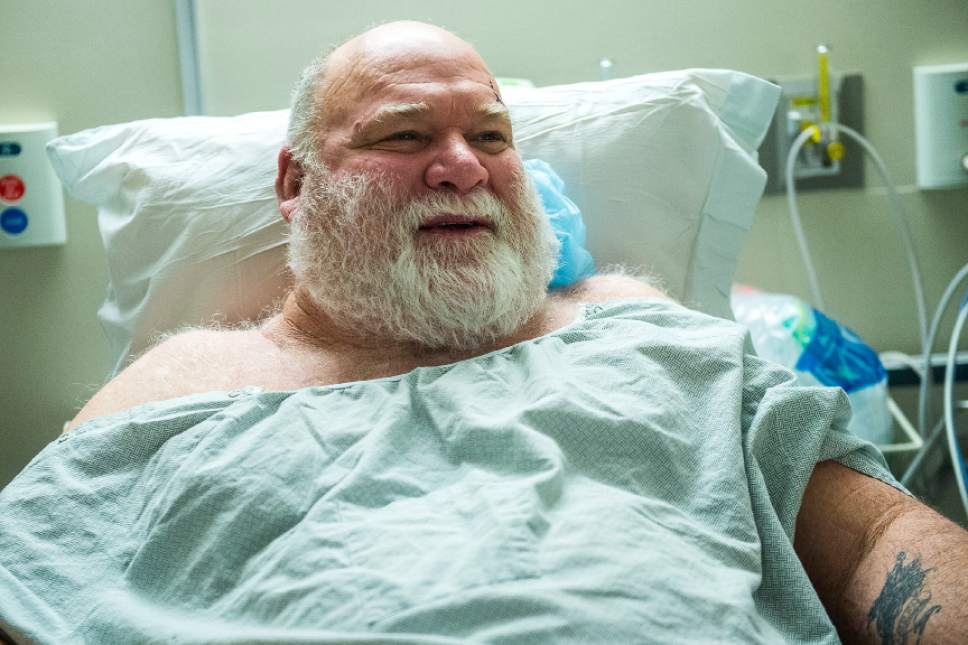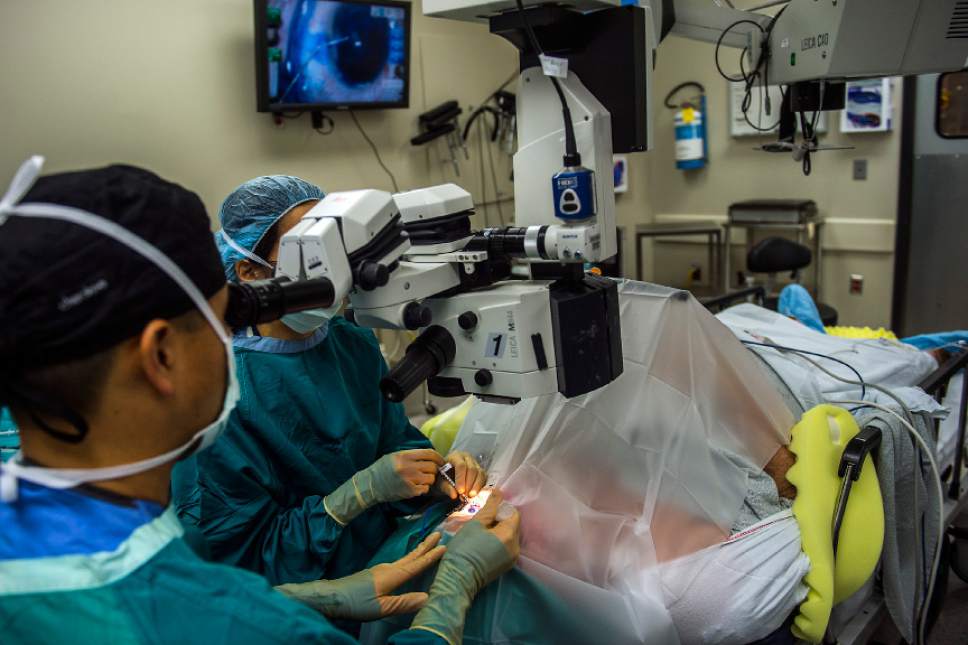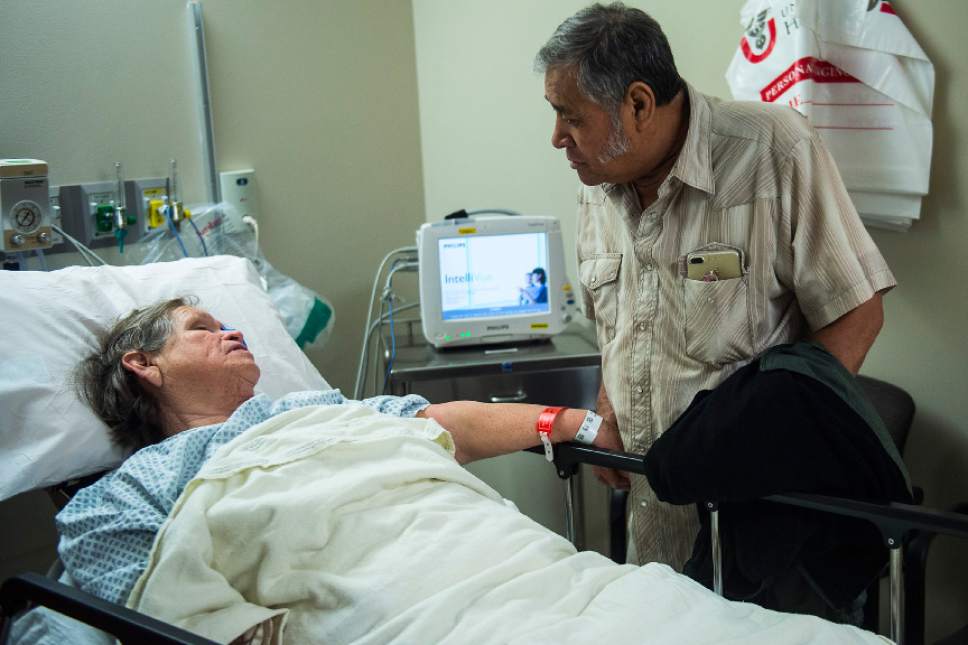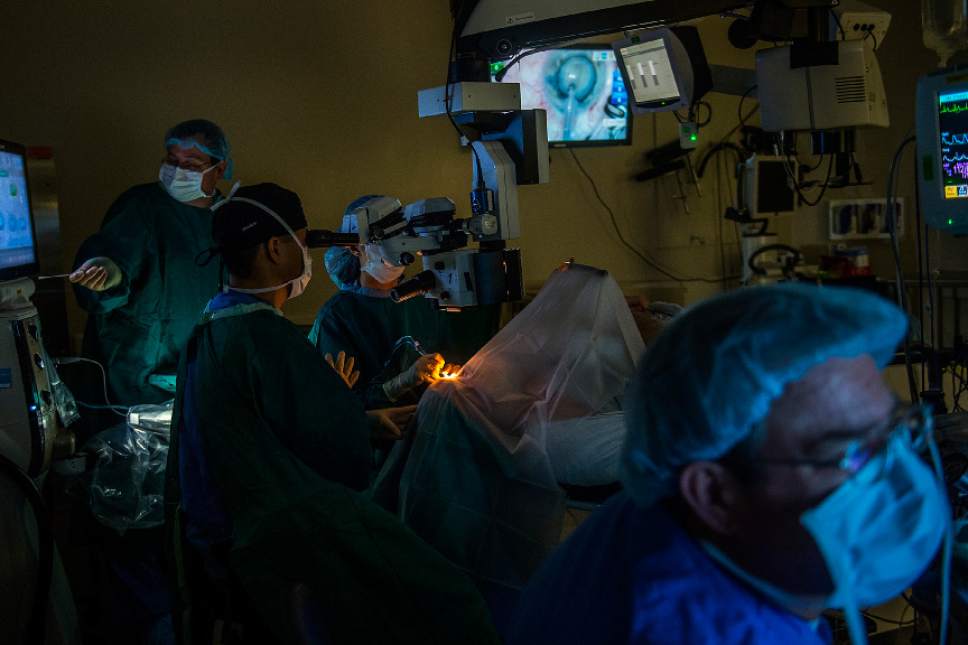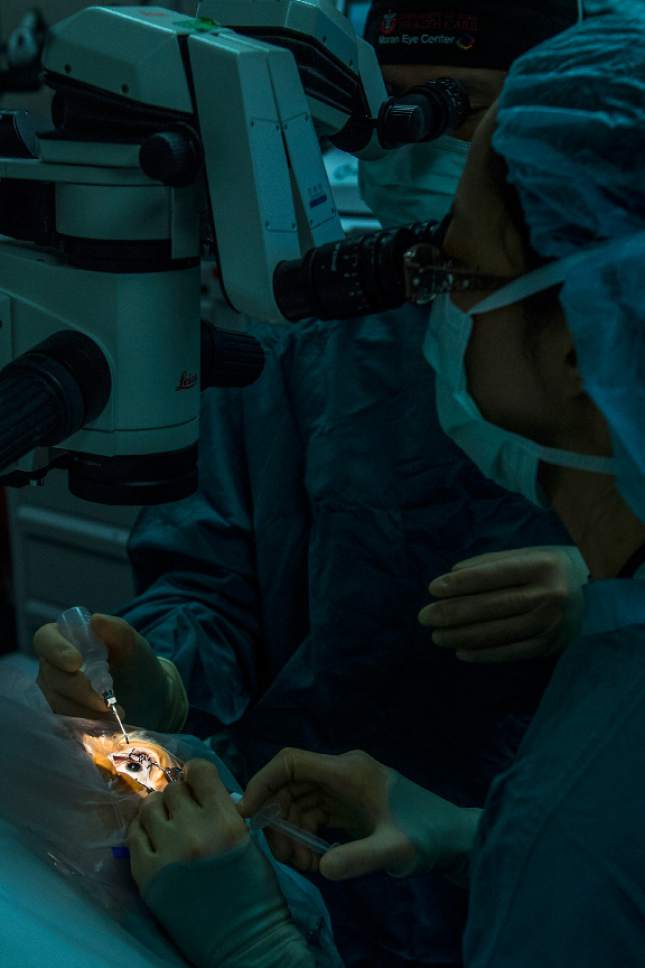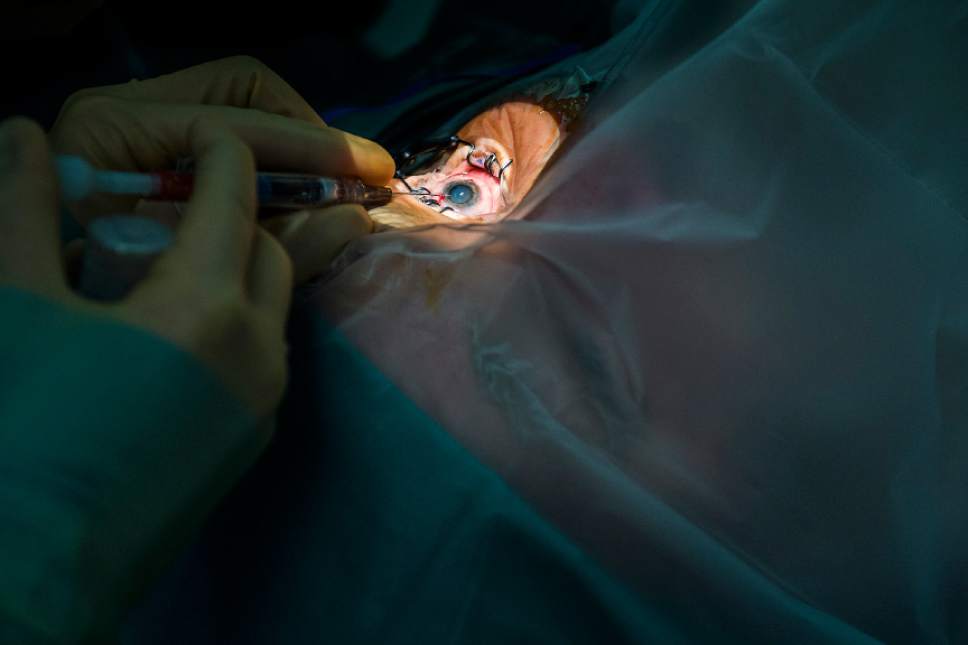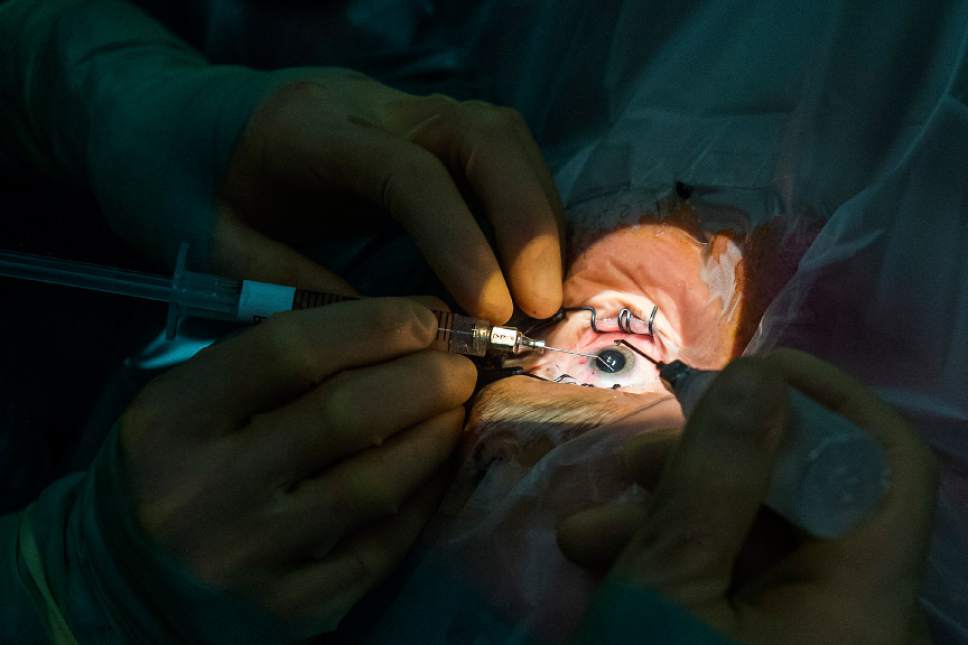This is an archived article that was published on sltrib.com in 2017, and information in the article may be outdated. It is provided only for personal research purposes and may not be reprinted.
Johnnie Mahoney, a Salt Lake City construction worker, first started noticing something goofy with his vision in August, when his eyes became irritated and blurry while dumping debris at the landfill.
"I closed my right eye and I realized I couldn't see out from the left eye. It's a scary thing," Mahoney recalled.
A cataract had developed suddenly. Soon after, he lost sight in that eye, as well as his depth perception. The vision impairment not only cost him his ability to work pouring concrete but turned his kitchen into a mess. That fried egg he tried to put on a plate wound up on the floor. Same with the milk that was supposed to be poured into a glass.
Eight months later, Mahoney, 63, had the problem fixed at the University of Utah's John A. Moran Eye Center as part of twice yearly event known as Operation Sight Day, which provides free corrective surgery — that typically costs $4,000 an eye — to low-income patients. On Saturday, more than 30 U. medical staff donated their time to treat 23 patients who would otherwise remain visually impaired.
The charity surgery program, which started in 2012, now includes the Eye Institute of Utah and the St. George Eye Center. Pharmaceutical companies donated the replacement lenses, and Bank of American Fork helped cover other costs.
Most people have cataracts forming on the lenses of their eyes, but for some, the process has sped up, clouding their vision and interfering with their life. Diet, sunlight, smoking, diabetes and even trauma can spur cataract formation.
"We all get them. You could be born with cataracts," said Alan Crandall, a professor of ophthalmology and Moran's director of glaucoma and cataract. He also spearheads global outreach for the center, leading and organizing humanitarian trips to Ghana for the past two decades and now other developing nations.
Cataracts can be more prevalent in equatorial regions because ultraviolet rays speed their formation. Without treatment available, many people are saddled with curable blindness, taking them and a caregiver, usually a younger family member, out of the workforce. In some communities, 30 percent of the people are either blind with cataracts or caring for someone with the condition, according to Crandall.
"When you cure the one person, you are returning two people back into the economy of that country, it's humongous," said Crandall, whose division also provides services on the Navajo Reservation. "We aren't a [medical] subspecialty, we are a necessity."
Crandall also has treated animals, such the dogs of homeless people, a kangaroo, a show-business tiger and Gorgeous, the Hogle Zoo's beloved gorilla that died of old age in 1999.
The surgery takes about 20 minutes and requires only a local anesthetic. In the procedure, the eye is opened and an ultrasound is used to break up the clouded lens, which is sucked out. It is replaced with a clear acrylic foldable lens that will remain cataract free.
Unlike Mahoney, Maria Escojido doesn't recall when cataracts began ruining her eyesight. It started a long time ago and took years to blind her. Her right eye was treated at least year's Operation Sight Day, and she returned Saturday to repair the left one.
"I cannot drive at nighttime. It is hard to focus. We have a check from Social Security, but it's not enough," said Escojido. "I work like crazy my whole life with two jobs."
The 69-year-old house cleaner from Logan has 21 grandchildren and looks after her husband, Samuel, who has his own vision troubles with glaucoma. After her surgery Saturday, she recovered with a protective cover over her left eye and relaxed with her husband at her side.
Mahoney, who is 63, said he was elated when he learned he was selected for the program. In a Moran consultation room, he covered his good eye and looked up at the ceiling light.
"I can barely tell there is a light. I can't see even see my hand," he said as he waved a hand inches from his face. Now, he looks forward to returning to work.
"I have a couple jobs lined up. I want to get back to work, but I don't want to get hurt," he said.




